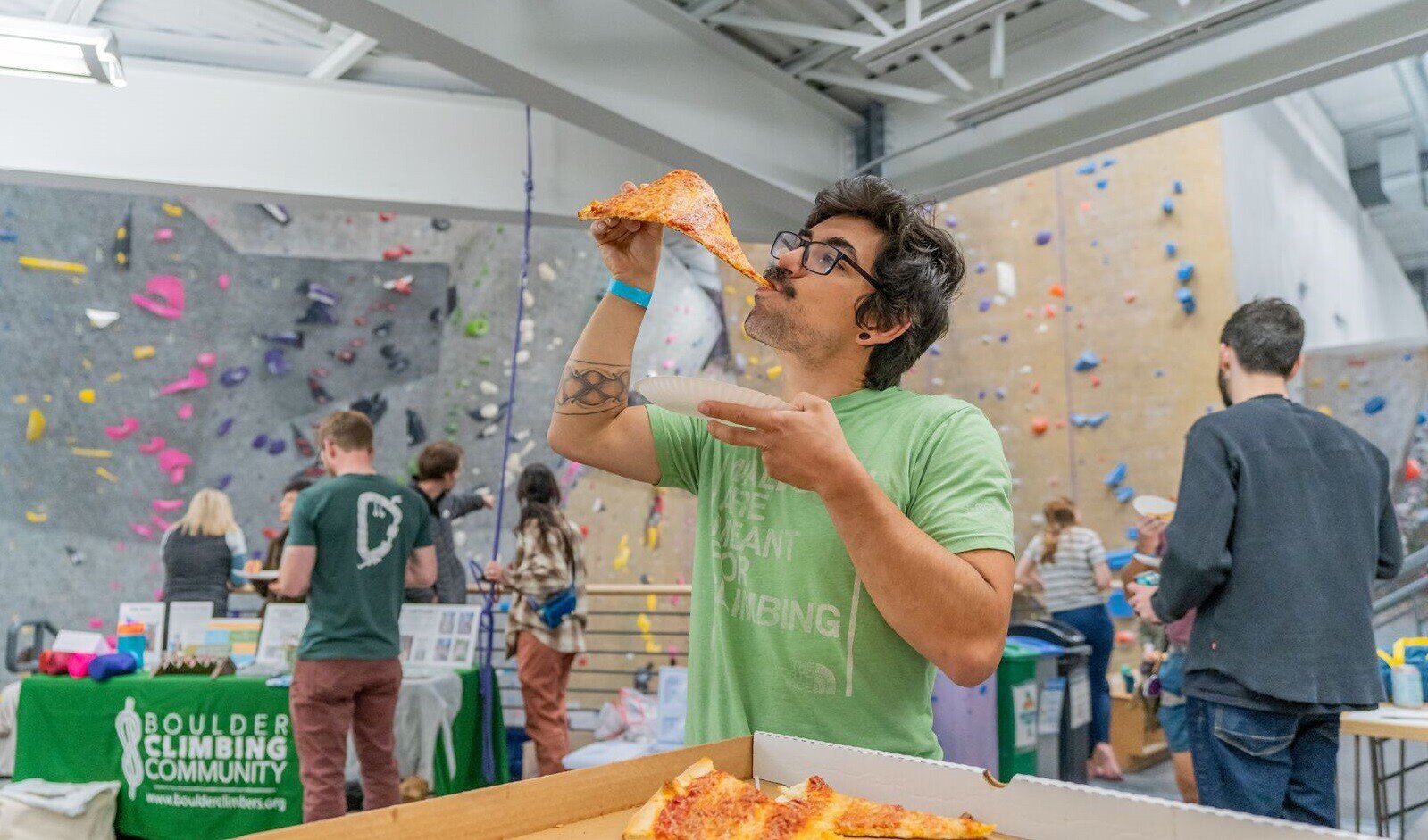Rock Solid Nutrition: 4 Tips to Level Up Your Climbing
Does this sound like you? You’ve been climbing consistently, hangboarding, and training off the wall, but you still can’t send your project. Or maybe you’re a more casual climber but you’re so sore after each session, you’re not able to climb as much as you’d like. Either way, the missing puzzle piece may be nutrition.
If you want to climb harder and feel better, follow these 4 nutrition tips:
1. Don’t skip the pre-climb snack
Just like you wouldn’t drive to the mountains without filling up your gas tank, you don’t want to climb on E. 30-90 grams of carbohydrates before a climbing session can improve the quality of your session, help you stay on the wall longer, and give you the energy that you need to send your project or get through your 4x4s. Choose something easily digestible, like a granola (not protein) bar, fruit smoothie, glass of orange juice, or graham crackers.
2. Make recovery part of your training
Training stresses your body but recovery makes you stronger. Adequate fueling after a climbing or training session helps strengthen your muscles, prevent injury, and improve performance. Keep the “3 Rs of Recovery” in mind after a training session:
- Repair: We all know that protein after a workout is important to help repair muscle damage and build new muscle fibers. Aim for about 20-40 grams of protein after training.
- Replenish: When you exercise, you deplete your muscles’ stores of carbohydrates. Including carbs in your recovery meal helps to replenish these stores. As an added bonus, carbs facilitate your muscles’ uptake of protein – which makes your muscles stronger. Pair 40-90 grams of carbs with your protein after training.
- Rehydrate: Don’t forget to replace fluids lost in sweat by drinking water. Hydration needs are highly individual but 8-16 oz is a good starting point.
And don’t neglect things like stress and sleep, either!
3. Pack crag snacks (and actually eat them) – even at the gym
If you are climbing for longer than about 1.5-2 hours, you cannot rely on your body’s energy stores alone. This is where crag snacks come in! (Even at the gym – we promise nobody is judging you.) Eat a carb-heavy snack containing about 200-400 calories every hour or in between pitches. If you’re climbing for longer than about 3-4 hours, be sure to include a small amount of protein to keep you satiated.
Here are some of our favorite crag snacks:
- Granola bars
- PB&Js
- Crackers with tuna
- Gummy bears
- Homemade trail mix (store-bought trail mix is generally too low in carbs)
Adequate fueling is especially important in climbing compared to other sports because the consequences of being light-headed and delirious are much higher when you quite literally have your partner’s life in your hands. And nobody wants to climb with a hangry person.
4. Make peace with your body
We’ve all heard the old saying that lighter is better in climbing. But research doesn’t actually back up this claim. While it’s true that some studies do find a link between body weight or body mass index (BMI) and climbing grades, others find no relationship. Furthermore, elite climbers are at higher risk of under-fueling and disordered eating than recreational climbers – so rather than a lower BMI contributing to climbing harder… it may be the case that top-performing climbers just happen to be lighter because they aren’t eating enough.
Either way, if this “lighter is better” mindset causes you to eat less than your body needs to perform and recover (it probably does) and causes anxiety… it’s not serving you.
Dangers of under-fueling to cut weight include increased risk of injury; decreased immunity; depression and anxiety; reduced strength, power, and endurance; and poor relationship with food.
By making peace with your body, you can truly respect it by giving it the fuel that it needs to support training and recovery. But if you, like most of us, have grown up under the influence of diet culture, making peace with your body may seem as likely as you climbing V25. Here are some tips to get started:
- Listen to your body! Fuel it adequately and give it rest when it asks.
- Unpack your beliefs about body size and shape – both within and outside of climbing. (This is HARD work! Don’t hesitate to seek the help of a qualified professional here, like a therapist or dietitian.)
- Do a social media detox. Unfollow any account that makes you feel bad about yourself and fill your feed with bodies of all sizes and shapes doing awesome things (I promise, they are out there).
- Show yourself compassion. Learning to respect your body is, in many ways, a radical act of self-care and it’s easy to feel like you’re swimming upstream. Be kind to yourself and treat setbacks as learning opportunities instead of failures.
Please note that nutrition needs are highly individual, and the recommendations provided here are general guidelines. For personalized advice tailored to your specific needs, we recommend consulting with a Registered Dietitian.
Want to learn more? Reach out to Peak to Peak Nutrition for 1:1 support.
Meet the Author
Alyssa Leib, MS, RD, is a Registered Dietitian and the owner of Peak to Peak Nutrition. She works with climbers and mountain athletes of all levels to help them dial in their nutrition to perform and feel their best. Alyssa believes that mental health is just as important as physical health and supports every athlete she works with in building and nurturing a positive relationship with food and with their bodies. Alyssa frequently offers workshops on nutrition for climbers at Movement gyms in Colorado; keep an eye on our calendar for the next workshop!


